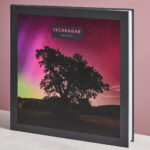Why you can trust TechRadar
We spend hours testing every product or service we review, so you can be sure you’re buying the best. Find out more about how we test.
Sky Glass Air review: two minute review
The Sky Glass Air is the latest addition to the media company’s lineup of dish-free TVs, aiming to offer all the convenience of the full-fat Sky Glass, but at a considerably lower price-point. At essentially half the price of its step-up sibling, the Sky Glass Air appears to be mind-blowing value for money – but it does make a number of sacrifices to keep that price nice and low.
Perhaps the most obvious downgrade on the Sky Glass Air is its removal of an integrated soundbar. Yes, rather than coming fully equipped with a 3.1.2 sound system, the Glass Air opts for a run of the mill dual-speaker setup, which means you’ll get considerably less immersive, powerful audio.
Dialogue is still pretty clear on the Glass Air, and it can get fairly loud too – but aspects like bass output and expansiveness are pretty lacking. Unlike the full-blown Sky Glass and many of the best TVs, you won’t get any Dolby Atmos here either, but there is basic Dolby Audio.
I really appreciated the more full-sounding, cinematic sound of the Sky Glass Gen 2 – it’s something that made it feel like a ‘true’ all-in-one entertainment hub. But for more casual viewers, this may be a sacrifice well-worth making given the Air’s far smaller price tag.
Similarly, picture quality is a bit limited on the Sky Glass Air. This set uses global dimming, as opposed to the more advanced local dimming present in the Sky Glass Gen 2. What this essentially means is that contrast and dynamic range isn’t as impressive. The Air also didn’t offer the same brightness as the Gen 2, but otherwise there’s a lot to like here.
Of course, this is still a 4K HDR display, and for the most part, you get a decently detailed viewing experience with fairly vibrant colours. There are also a good number of picture modes to pick from if you want to tailor the Air’s look to your liking. And although Atmos has been dropped, Dolby Vision is still here in all of its glory. So, even if the Air’s global dimming and unremarkable audio make it sub-par for the movie fanatic, it still has more than enough going for it if you’re a more casual viewer.
The Sky Glass Air excels when it comes to ease-of-use too. The Sky OS is simple to use, navigating menus is responsive, and even piecing the TV together with its stand takes mere seconds. And that’s the real beauty of the Sky Glass Air – it’s a highly convenient, complexity-free set. You can even use voice controls to find whatever you need – be that a streaming service or movie recommendations. Doesn’t get much easier than that, does it?
Due to its soundbar-less build, the Glass Air is slimmer and lighter than the standard Gen 2 – hence its name. But still, don’t expect the most razor-thin TV you’ve ever seen. Looks-wise, this is actually a pretty unique model, though, predominantly thanks to its various colour options. Yes, there are three variants to choose from, but I went for Sea Green, which I was a big fan of – I wish more manufacturers offered variants like this.
Something that I wasn’t a fan of, however, was the TV’s lack of gaming features. Sure, the TV can activate a gaming mode when it detects a signal from your console thanks to ALLM. But that really is it. There are no other gaming options to uncover, and despite offering three HDMI 2.1 ports, gameplay will be capped at 60fps due to the Air’s 60Hz refresh rate.
In the end, then, the Sky Glass Air is a very solid TV for casual viewers, putting up steady picture quality, fantastic ease of use, and of course, a tempting low price. The Air’s global dimming and average audio mean that the pricier Sky Glass Gen 2 remains my recommendation for those seeking the ultimate all-in-one option. But if you’re willing to sacrifice those things, and don’t need top-tier gaming performance, the Sky Glass Air is well-worth considering.
Sky Glass Air review: prices & release date
- Launched in June 2025
- 43-inch: £309
- 55-inch: £509
- 65-inch: £649
The Sky Glass Air launched in June 2025, a little after its step-up sibling, the Sky Glass Gen 2. You can grab the 43-inch version for just £309, the 55-inch model for £509, and the 65-inch display for £649.
That is, of course, if you decide to purchase the TV outright. Alternatively, you can pay for the TV on a contract – much like you’d purchase a phone via Sky Mobile, for instance. The monthly cost will vary depending on the model you select, but the 43-inch version can be yours from £6 a month… pretty cheap, right?
What these prices fail to account for, however, is the subscription cost for Sky TV channels and products. Yes, you’ll have to spend an additional amount on the likes of Sky Sports, Sky Cinema, and stuff like ad skipping – if you’re not already a paying subscriber, that is.
You can grab the Sky Glass Air in three colourways: Carbon Grey; Cotton White; or Sea Green. I tested the latter, which you’ll see pictured throughout this review. The price you pay shouldn’t differ based on the variant you select.
Sky Glass Air review: specs
|
Screen type |
QLED |
|
Refresh rate |
60Hz |
|
HDR support |
Yes |
|
Audio support |
Dolby Vision, HDR10, HLG |
|
Smart TV |
Sky OS |
|
HDMI ports |
3x HDMI 2.1 |
Sky Glass Air review: benchmark results
There is no Standard mode on the Sky Glass Air, which we use for some of our SDR and HDR brightness measurements. The figures you see for ‘Standard’ picture mode on the Sky Glass Air were instead taken using its Vivid configuration. In addition, the Game picture mode is only activated when an ALLM signal is detected from a console, which our dedicated input lag tester doesn’t provide – so we were unable to take the input lag measurement with Game mode active. This was also the case for the Sky Glass Gen 2, which had 55.4ms latency in Vivid picture mode.
Sky Glass Air review: features
- Fantastic voice controls
- Various picture modes
- Three HDMI 2.1 ports (but no 4K 120Hz support)
If you’ve seen anything about the Sky Glass line before, you’ll probably know what you’re getting into – it’s an all-in-one entertainment hub with everything you could want: live broadcast TV; streaming services; recordings of your favourite shows… I could go on. And the best part? There’s no dish installation required – everything runs over a home network connection.
The high-convenience nature of the Sky Glass Air is paired with a pretty simplistic set of features – there’s a clear attempt here to deliver the most straightforward TV user experience possible.
As a result, all the key options can be accessed with the push of a button. Simply press ‘…’ on the Glass Air remote and you’ll be able to cycle through a few options, like picture and audio modes. In picture settings, you’ll spot an Auto mode, which switches between the various options, like Movie or Music, depending on the content you consume.
Alternatively, you can manually select a picture mode, with a nice selection of preset options like Vivid, Extra Vivid, and Entertainment to name a few. Notably, if you view Dolby Vision content, you’re locked in to related modes – there’s only a Bright or Dark configuration to pick between.
There are some handy audio settings you can toggle on too, including Night Mode and Enhance Speech Quality. The first reduces volume and the impact of sudden noises, while the second sharpens vocal clarity if you’re struggling to make out what’s being said on screen.
If it’s more advanced settings you’re after, there are a few to play around with, but you’ll have to scroll down deeply into the home menu to unearth them. Here, you can find auto-backlight adjust, EQ options, and more.
Probably my favourite feature on the Sky Glass Air is its voice control functionality. You can either say ‘Hello Sky’ and issue a command via the TV mic, or hold down the mic button on the accompanying remote – the more consistent method, in my experience. With voice control, I could open the TV’s various apps, ask to view content like ‘live sport’, and switch to a different HDMI source.
There are some unfortunate omissions to note, though. Firstly, despite having three HDMI 2.1 ports, the Glass Air doesn’t deliver 120Hz gaming or variable refresh rates. On top of that, it doesn’t support a few visual and audio technologies, including HDR10+, DTS, or Dolby Atmos. Although this isn’t the end of the world for a TV that’s built with streaming in mind, you will find these things from similarly priced competitors.
Sky Glass Air review: picture quality
- 4K display with Dolby Vision
- Harnesses global dimming as opposed to advanced local dimming
- Not the brightest, but colours remain fairly vibrant
At a glance, you might not realise a difference between the Sky Glass Air and its pricier sibling, the Sky Glass Gen 2. After all, both harness a 4K quantum dot display with Dolby Vision and a 60Hz refresh rate. But dig a little deeper and you’ll find one key point of departure.
That’s right, the Glass Air uses global dimming and HDR, whereas the Gen 2 makes use of local dimming and advanced HDR. What that essentially means is that during darker scenes, the backlight on the Glass Air is dimmed uniformly, leaving contrast and detail levels slightly hampered. Of course, local dimming on the standard Glass opens the door to a more nuanced picture, but perhaps that’s to be expected in light of its considerably higher price.
As you may expect, the Glass Air isn’t spectacular by any means when it comes to picture quality, but it still looks solid overall. When watching Oppenheimer in Dolby Vision, details like markings on the titular character’s face, droplets of sweat, and stitching on clothing were all perfectly visible. OK, during the black and white segments I was hardly blown away by inky blacks and perfectly bright whites, but given the technical restrictions and price of this display, that’s to be expected.
More colourful movies didn’t blow me away, however, even when watching in Dolby Vision. For example, I tuned into The Boy and the Heron, and during a scene in which the protagonist charges through an ablaze building, all-consuming flames lacked the intensity and saturation I’d expect. The clothing of characters also looked flushed out when I did a side-by-side comparison with the Sky Glass Gen 2, which offered a more vivid presentation.
When watching movies with the lights turned on in our TV testing room, some on-screen reflections were apparent. The same can be said for when I positioned the TV near a window. Still, these reflections were never severe enough to distract me from the on-screen action.
Don’t expect anything special from the Glass Air in terms of brightness, either. With the picture set in Movie mode, I measured a peak HDR brightness of just under 400 nits, which is very similar to that of the original Sky Glass.
Despite all of that, though, you’ll still unlock decently detailed, clean 4K viewing with the Sky Glass Air. And even when watching broadcast content on Sky Sports and Sky News or lower quality videos on YouTube, I was never met with a blurry or vague picture. For more casual viewers, the Glass Air should do the trick, just don’t expect any wizardry in the picture department.
- Picture quality score: 3.5/5
Sky Glass Air review: sound quality
- No integrated soundbar or Dolby Atmos
- Two 15W speaker setup with decent dialogue
- But bass is thin and general immersiveness is lacking
As you would expect, the biggest downgrade to Glass Air compared with the Glass Gen 2 is in the audio department. Yep, you’re not getting that built in 3.1.2 sound system here – just a standard 2.0 channel setup.
And I won’t beat around the bush, audio is by no means special on the Glass Air. Sure, dialogue is clear enough, and if you’re watching a daytime talk show for instance, you’ll likely be satisfied with what’s on offer. You also get decently powerful sound that is adequately clean at higher volumes.
But if you’re watching something a little more layered, like a newly released movie on Sky Cinema, you’re going to encounter some shortcomings. That’s because audio is fairly thin-sounding and lacks a low-end bite.
When I watched one of my go-to reference films, The Boy and the Heron, there’s a scene in which frogs cover the protagonist, Mahito, and deep bass ripples throughout. However, on the Glass Air, this bass was next-to non-existent, leaving the scene devoid of its intended impact. Other sounds were lacking too, such as the snap of a wooden sword when the heron chomps down on it, which sounded dulled and blunt rather than crisp and snappy.
Again, dialogue in the movie remained plenty clear through almost all scenes, even the more high octane ones, and this can be boosted further with Enhance Speech Quality mode active.
You won’t get the most expansive sound either. Yep, there’s no Dolby Atmos here, just basic Dolby Audio. That’s paired with auto-adjust tech, which fine-tunes sound depending on the content you’re viewing – but even with this, you can’t expect truly engrossing audio. If you want a more immersive movie-watching experience, then, I’d recommend pairing the Glass Air with one of the best Dolby Atmos soundbars.
Sky Glass Air review: design
- Slimmer than standard Glass due to omission of built-in sound system
- Incredibly easy to setup
- Elegant backlit remote
Looks-wise, the Sky Glass Air is a little different to its step-up sibling, the Sky Glass Gen 2. Of course, there’s no 3.1.2 sound system surrounding the whole display, so you get a slightly thinner, smaller frame with the Air. It’s still not the slimmest set money can buy, but for many that more compact build will be an attractive proposition.
And as was the case with the full-fat Sky Glass, I absolutely loved how easy it was to set up the Sky Glass Air. Simply attach two pegs to the included stand, slide the TV onto them and… voilà! That’s all there is to it. When some of the biggest players in the TV market still make you mess around with lots of screws, hefty stands, and confusing instructions, this ease-of-use is most welcome.
Even though the Air is a ‘lite’ edition of sorts, you’ll still get three HDMI 2.1 ports, as well as a USB-C, USB-A, Ethernet and aerial slot. An aerial can be used as a backup for broadcast TV, by the way, in case of a network failure. You’ll also find a digital optical port on the Air, something the Gen 2 leaves out.
On top of that, you get a very neat remote, which has a handy mic built-in for activating voice prompts, as well as beautifully backlit buttons for night time use. The remote is colour-matched to your Glass Air, which can be purchased in Carbon Grey, Cotton White, or the variant I tested, Sea Green.
Sky Glass Air review: smart TV & menus
- Convenient all-in-one Sky hub
- Responsive menus
- Advanced settings slightly hidden
If you’ve ever used a Sky box or Sky Stream, you’ll probably be plenty familiar with the OS used by the Glass Air. The home menu is equipped with a range of TV channels, smart apps, games, and content from connected HDMI sources.
This centralised hub configuration is one of the most attractive features of the Glass range. You can access your ‘currently watching’ list on Netflix, favourite channels, and playlists, all in one place. It’s worth noting, of course, that some channels on the home menu will only be accessible if you have the relevant Sky streaming subscriptions.
When cycling through the various menus, I found navigation to be responsive, quick, and easy. In fact, the only time you may encounter slowdown is if your network is on the weaker side of things. Sky says that you’ll need access to a minimum download speed of 25Mbps for 4K streaming, for reference.
I’ve said it before and I’ll say it again: my only major issue with Sky’s interface is its positioning of advanced settings. Sure, the Glass Air may be aimed towards more casual viewers, but I didn’t enjoy scrolling all the way to the bottom of the main hub just to access Dolby Vision picture options and the like.
- Smart TV & menus score: 4/5
Sky Glass Air review: Gaming
- ALLM and 4K gameplay
- But refresh rate maxes out at 60Hz
- Lacks a suite of gaming features
In my Sky Glass Gen 2 review, I stressed how the TV was far from ideal for gamers, so it will be of no surprise that the case remains the same for the Glass Air. Its display is capped at 60Hz, so despite the inclusion of three HDMI 2.1 ports, you won’t be able to indulge in 120fps gaming, which is available on a range of titles for PS5, Xbox Series X and Nintendo Switch 2. Instead, you’ll have to settle for 4K 60fps.
You get ALLM (auto low-latency mode) on the Sky Glass Air, but don’t expect more advanced features like VRR (variable refresh rate), which is available on plenty of entry-to-mid-level TVs, including the TCL C6K.
With what you do get, though, the Glass Air performs decently overall. I tried playing Mario Kart World on my Nintendo Switch 2 and the rich red of my racer, Sidestepper (he’s a crab), appeared vivid and accurate. Moving over to the instant classic Donkey Kong Bananza, and I wasn’t blown away by perfect motion, but performance was generally smooth and, again, the game’s eye-popping colour palette didn’t appear overly muted.
Sky Glass Air review: value
- Very attractive low price
- Each size costs around half of its Glass Gen 2 counterpart…
- …but you’ll make some substantial sacrifices
It’s undeniable that the Glass Air is all about value for money – it’s quite literally just a more bare-boned, rudimentary Sky Glass Gen 2. As a result, the Glass Air can be purchased for around half – yes half – the cost of the fully fledged Sky Glass Gen 2.
That’s right, the Sky Glass Air comes in at £309 for the 43-inch variant, £509 for the mid-sized 55-inch model, and just £649 for the largest 65-inch alternative. Sure, you’ll have to pay separately for Sky subscriptions and the like, but that’s still a fairly low price for a 4K QLED TV.
It has to be said, though, you’re going to be making some major sacrifices if you go for the Glass Air over the Glass Gen 2. The most obvious is the lack of a built-in Dolby Atmos soundbar – something that makes the Glass proposition truly complete. The inclusion of a sound system on the Glass Gen 2 means you really don’t need to purchase anything extra, but the restricted audio performance of the Glass Air takes that element away.
In addition, picture quality takes quite the hit if you select the Glass Air over the Gen 2. I performed a side-by-side comparison and the lack of local dimming on the Air was very much apparent, with contrast levels noticeably weaker. The Air wasn’t quite as bright either, and colours didn’t pop in the same way when watching vivid, animated movies or sports content.
Are these sacrifices worth making? Well, it really depends. If you’re not too fussed about cinematic audio and amazing picture quality, the Glass Air is a well-priced, convenient hub with pretty much everything you could want. But if you want access to Dolby Atmos without purchasing one of the best soundbars, as well as higher-calibre picture quality, it might be worth spending extra on the Glass Gen 2.
Should I buy the Sky Glass Air?
|
Attributes |
Notes |
Rating |
|---|---|---|
|
Features |
Brilliant voice controls, solid picture and audio modes, yet lacks some features offered by rivals. |
3.5/5 |
|
Picture quality |
Decently colourful, detailed display for the price, but contrast and brightness aren’t the best. |
3.5/5 |
|
Sound quality |
Basic 2-speaker setup is fairly clear, but hardly immersive and no Dolby Atmos. |
3/5 |
|
Design |
Slimmer than Glass Gen 2, nice colour options and sleek remote. |
4.5/5 |
|
Smart TV & menus |
Practical all-in-one hub, responsive UI, advanced settings somewhat hidden. |
4/5 |
|
Gaming |
ALLM, but no other gaming settings, no VRR or 120Hz. |
2.5/5 |
|
Value |
A significant step-down from the Glass Gen 2, but half the price |
4/5 |
Buy it if…
Don’t buy it if…
Sky Glass Air review: also consider
| Header Cell – Column 0 |
Sky Glass Air |
TCL C6K |
Hisense U7N |
|---|---|---|---|
|
Price (65-inch) |
£649 |
£799 |
£799 |
|
Screen type |
QLED |
Mini-LED |
Mini-LED |
|
Refresh rate |
60Hz |
144Hz |
144Hz |
|
HDR support |
Dolby Vision, HDR10, HLG |
Dolby Vision, HDR10+, HDR10, HLG |
Dolby Vision IQ, HDR10+, HDR10, HLG |
|
Smart TV |
Sky OS |
Google TV |
VIDAA |
|
HDMI ports |
3x HDMI 2.1 |
4 (2x HDMI 2.1) |
4 (2x HDMI 2.1) |
How I tested the Sky Glass Air
- Reviewed over the course of a week
- Tested with both SDR and HDR sources
- Took measurements using Portrait Displays’ Calman colour calibration software
I used the Sky Glass Air over the course of a week, testing out its full suite of features and watching a ton of content, both critically and casually.
During analytical viewing sessions, I used reference scenes from movies and TV shows to assess factors like black levels, motion, colour accuracy, contrast, and brightness. To do this, I viewed Dolby Vision, HDR, and SDR content across streaming services, broadcast and 4K Blu-ray. When viewing content via the latter method, I used the Panasonic DP-UB820 4K Blu-ray player.
Further to this, I took measurements using a colourimeter, test pattern generator, and Portrait Displays’ Calman colour calibration software.
I initially took measurements of the Sky Glass Air’s brightness using both HDR and SDR white window patterns, ranging in size from 1-100%. Then, I tested the TV’s greyscale and colour accuracy, taking an average of Delta-E values (the margin of error between the test pattern source and what’s shown on screen), where we’re typically hoping for a result below 3. After that, I tested the Glass Air’s coverage of the UHDA-P3 and BT.2020 colour spaces.
Finally, I used a Leo Bodnar 4K HDMI Input lag Tester to test the TV’s input lag in milliseconds. But if you want to find out more, you can read an in-depth overview of how we test TVs at TechRadar at that link.
Read the full article here













